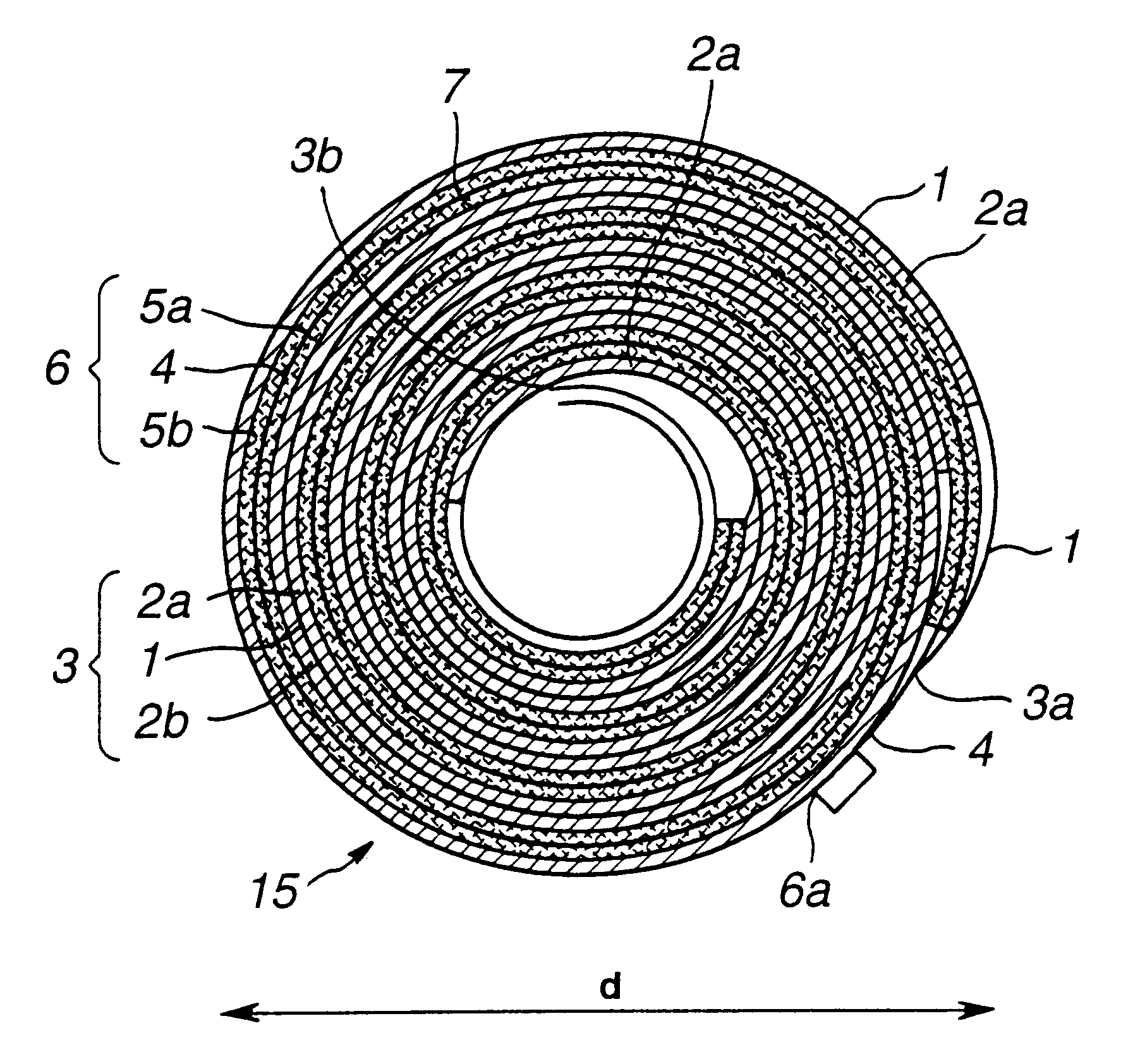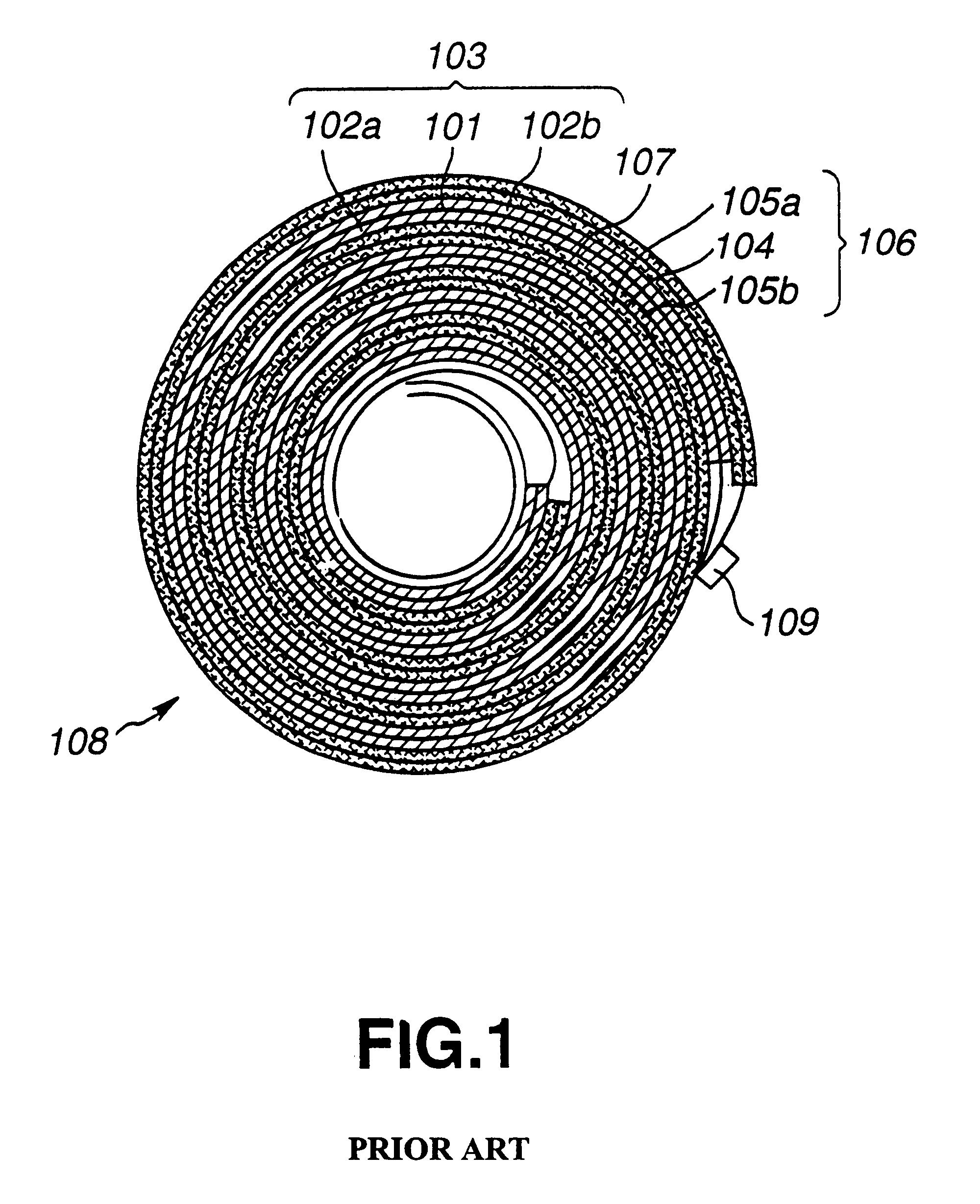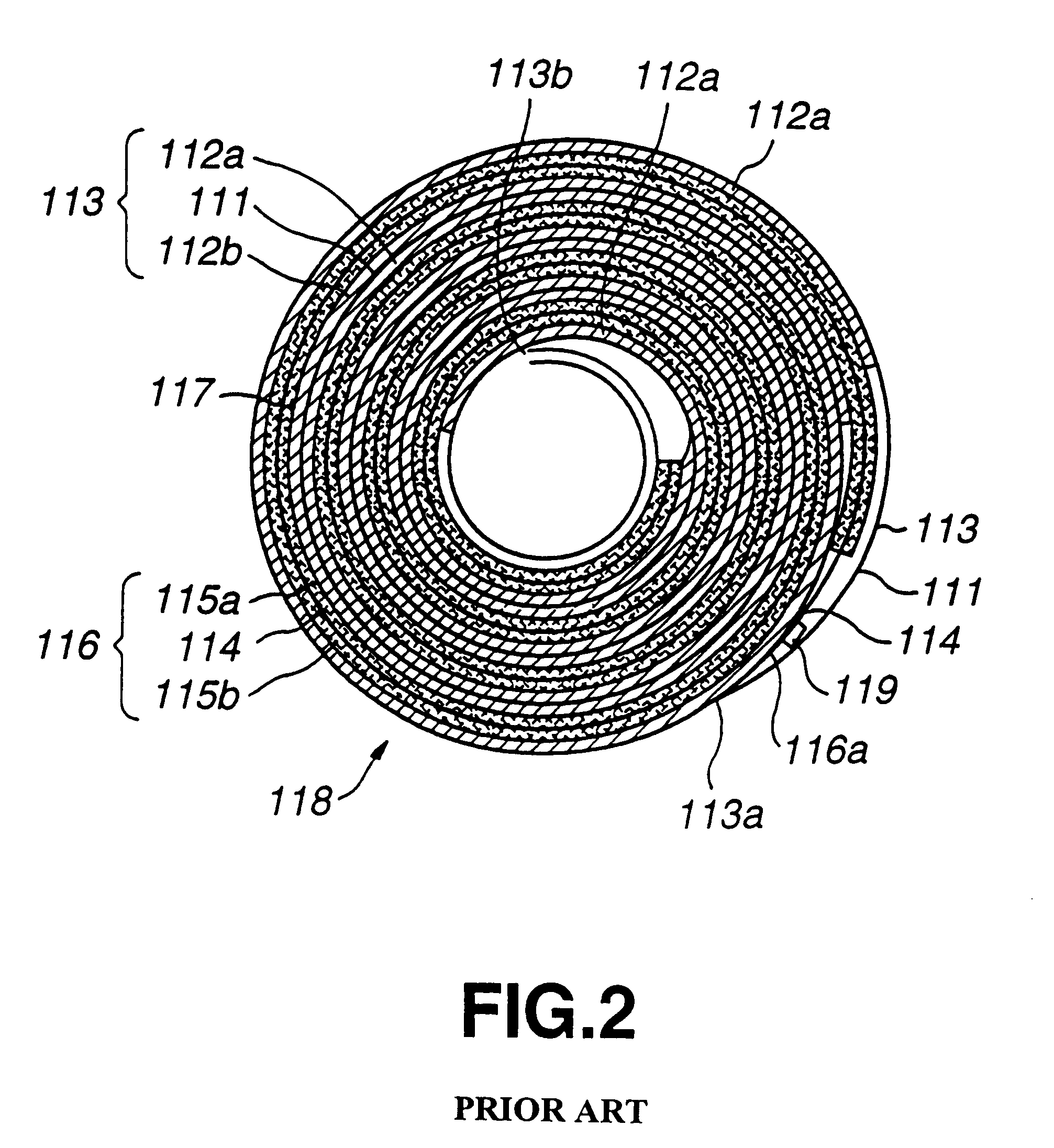Nonaqueous-electrolyte secondary battery
a technology of electrolyte and secondary batteries, which is applied in the field of nonaqueous electrolyte secondary batteries, can solve the problems of unsatisfactory battery energy density, ineffective use of the inside portion of the battery, and inability to satisfactorily raise the energy density of the nickel-cadmium battery and that of the lead battery, etc., and achieves the effect of effective use, elongation of the battery life and raising the energy density
- Summary
- Abstract
- Description
- Claims
- Application Information
AI Technical Summary
Benefits of technology
Problems solved by technology
Method used
Image
Examples
examples
Examples of the present invention will now be described with results of experiments.
Manufacturing of Samples
Sample 1
To manufacture, the negative electrode, petroleum pitch was employed as a starting material. The petroleum pitch was calcinated so that coarse pitch coke was obtained. The coarse pitch coke was pulverized so that powder having an average particle size of 40 μm was obtained. Then, the obtained powder was calcinated in an inactive gas at 1000° C. to remove impurities. Thus, a coke powder was obtained.
Then, 90 parts by weight of thus-obtained coke powder, serving as a carrier for negative-electrode active material, and 10 parts by weight of polyvinylidene fluoride (“PVDF”) serving as a binder were mixed. This negative-electrode mix was dispersed in N-methylpyrolidone, which serves as solvent. A negative-electrode mix slurry was obtained. The negative-electrode mix slurry was applied to the two sides of a negative-electrode collector in the form of copper foil having a thi...
PUM
| Property | Measurement | Unit |
|---|---|---|
| particle size | aaaaa | aaaaa |
| thickness | aaaaa | aaaaa |
| length | aaaaa | aaaaa |
Abstract
Description
Claims
Application Information
 Login to View More
Login to View More - R&D
- Intellectual Property
- Life Sciences
- Materials
- Tech Scout
- Unparalleled Data Quality
- Higher Quality Content
- 60% Fewer Hallucinations
Browse by: Latest US Patents, China's latest patents, Technical Efficacy Thesaurus, Application Domain, Technology Topic, Popular Technical Reports.
© 2025 PatSnap. All rights reserved.Legal|Privacy policy|Modern Slavery Act Transparency Statement|Sitemap|About US| Contact US: help@patsnap.com



